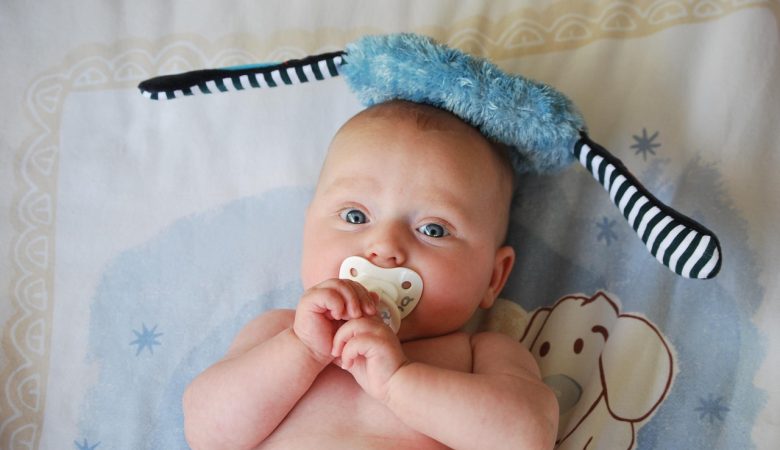Before I had my first baby, I thought crying was just… crying. A general distress signal for something—hunger, sleepiness, maybe a diaper situation. But then I became a parent and quickly realized that baby cries aren’t random at all. They each have a different tone, rhythm, and urgency. And once I started paying attention, I realized my baby was actually talking to me in their own little way.
If you’ve ever found yourself staring at your wailing newborn, wondering what they’re trying to say, trust me—you’re not alone. But the good news? With time (and a little decoding), you’ll start to recognize patterns. Here’s what I’ve learned about baby communication and how to tell what your little one really needs.
1. The “I’m Hungry” Cry
This was the first cry I learned to recognize—probably because it happened a lot. The hunger cry usually starts softly, like a little whimper, then builds up into a full-blown wail if you don’t respond quickly. Some babies also make smacking sounds, turn their heads side to side (rooting reflex), or even try to suck on their hands before they get to the crying stage.
How to respond: If you catch the hunger cues early, you might be able to feed your baby before the full meltdown happens. But if they’re already crying hard, try calming them with gentle rocking or skin-to-skin contact before offering a bottle or breast.

https://www.pexels.com/photo/a-baby-playing-wooden-toys-8504238/
2. The “I’m Tired but Fighting Sleep” Cry
Ah, the overtired baby cry, a sound I never truly appreciated until I had a baby who refused to sleep. This cry can sound whiny, almost like they’re complaining. It often comes with rubbing eyes, arching the back, or turning their head away from stimulation.
How to respond: The trick is catching sleepiness early. Once your baby is overtired, getting them to settle becomes much harder. Dim the lights, minimize noise, and try rhythmic movements like rocking or bouncing. Swaddling (for newborns) and white noise also work wonders.
3. The “I Need a Diaper Change” Cry
This one was tricky at first because it sounds similar to a hunger cry. But I started noticing that my baby would squirm a lot and make a fussier, low-level whimper when their diaper was wet or dirty. Some babies don’t mind a wet diaper, but others will absolutely let you know.
How to respond: A quick diaper check is always a good idea when nothing else seems to be wrong. Bonus: Changing them before they’re fully upset makes the whole process way easier.

Photo by Sarah Chai – Pexels
4. The “I’m in Pain” Cry
This is one of the hardest cries to hear because it’s sharp, intense, and urgent. It usually comes in sudden, high-pitched bursts, with little pauses in between. Gas pain, teething, or even a tiny sock seam pressing into their foot can trigger it.
How to respond: First, do a quick body check, look for anything that might be uncomfortable (a hair wrapped around a toe, a too-tight outfit, etc.). If you suspect gas, gently rub their tummy or do bicycle leg movements to help. For teething, a cold teething toy can work wonders. If the cry continues and something feels off, don’t hesitate to call the pediatrician.
5. The “I Just Need Comfort” Cry
Sometimes, babies cry just because they need to feel safe and close to you. This cry is usually more of a fussy, stop-and-start whimper rather than an all-out scream. It’s their way of saying, “Hold me, I need you.”
How to respond: Don’t stress about “spoiling” a newborn, babies thrive on closeness! Try baby-wearing, skin-to-skin contact, or gently swaying while humming. Often, just hearing your heartbeat or feeling your warmth is enough to calm them down.

6. The “I’m Overstimulated” Cry
Too much noise, light, or activity can overwhelm a baby, and when that happens, their cry might sound frantic or agitated. They may also try to turn their head away from whatever is overstimulating them.
How to respond: Take your baby to a quieter, dimly lit space and give them a moment to reset. Sometimes, just holding them close with a calm voice can help them feel safe again.
Trusting Your Instincts
Decoding baby cries takes time, and every baby is different. What worked for one of my kids didn’t always work for the other. But the more you listen and observe, the better you’ll get at understanding what your baby needs.
And here’s the thing, sometimes babies cry for no clear reason at all. On those days, when nothing seems to work, remember: You’re doing your best, and your baby feels your love. Take a deep breath, give yourself grace, and know that this stage won’t last forever.
Have you noticed different types of cries from your baby? Share your experience in the comments, I’d love to hear your take!









Leave a Reply